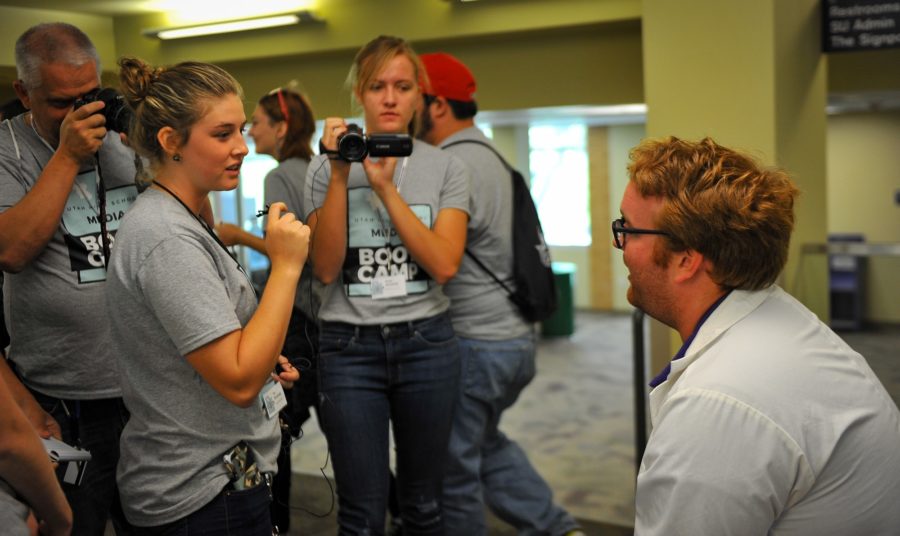As we were scrolling down our Facebook walls and through our Twitter feeds the other night, a post popped up about some happenings on the Brigham Young University campus. The situation involved a student’s personal issue with another student’s interpretation of the university’s honor code, a subject that always tends to simmer beneath discussions of the differences between various local Northern Utah universities.
For those who are out of touch with the local gossip loop, on Valentine’s Day at BYU, a young man handed a young lady a note that she originally thought was a love note. On Feb. 14, what else should be expected out of such an exchange?
However, contrary to what would be popular assumption, it turned out to be a half-page, handwritten criticism condemning the young woman’s wardrobe choice for the day as not being considerate of her fellow students and not following the campus’ honor code. The young lady tweeted a picture of the note alongside a picture of her clothing at the time — for those interested in seeing the picture, the story is easy enough to Google, but trust us in saying her outfit was exactly not what we expected after reading the note; i.e., it left us guessing as to what was going through the guy’s mind when he wrote it — and from there, the story made its rounds to local news stations, radio stations and, of course, the Internet.
The Internet is a funny thing. The people who use it are even better. All it takes is the right people on the right webpage with the right sharing options to click, and stories that would never have made it past lunch-table gossip back before the advent of Twitter and Facebook for the iPhone and Android find themselves the center of discussion on local news stations and university newspaper offices.
Many times, the stories themselves seem hardly worthy of such widespread coverage when such things like wars and famed celebrity deaths are going on. But each time one pops up into public light, no matter how laughable or utterly mundane it might appear to be, the fact that it reaches such popularity says something about the community that thrusts it into such a position.
After all, in the end, it is the public that decides what stories get the most attention, and a story is bound to get more interest if it resonates with enough people’s inner beliefs and frustrations. There are some discussions about whether the honor code incident was staged or not, but either way, the underlying message hit the central cores of enough people to make it news. It even spurred a Weber State University student into a visual response featuring a self-taken picture mimicking the young lady’s original post, only instead of a young lady it was a man, and instead of a full wardrobe it was a white pair of undies, a backpack, beanie and . . . not much else (again, for those who feel so inclined, the post can be found on the KCWR Facebook page where it originated).
The response post has since made its rounds to another radio station and to hundreds of viewers’ eyes. It has garnered generally positive responses, just as the original post did. But as we put in our own two cents in the comments, we took a moment to pause and ask ourselves . . . why? Why has this become such a big deal? And why did the original incident become popular in the first place?
It comes down to what we mentioned earlier: A story becomes popular by how well it resonates with the public. If we care, then we will listen, and we will share it with other people who we think will care, too, until it has spread far beyond where most stories normally could. With stories like this, it is an indication of the community’s personal underlying values and beliefs. To us here on staff, it is a commentary on the frustrations many people have concerning the conservative type of culture that is predominant in our local community.
After skimming through the hundreds of comments related to this story, the overall tone was that of disbelief and frustration, not at the young lady but at the young man who couldn’t give her the respect of voicing his opinion to her face. The overwhelming majority agreed that the young woman’s clothing choice was hardly offensive and not at all worthy of such a note. Many commenters mentioned that, in comparison with other women they have seen, her clothing is unquestionably conservative.
Of course, this brings up another question — if it was a man at the center of this incident and not a young woman, would the story have had such an impact? Probably not, but oh well, let’s leave it to the Facebook commenters to decide. They’re the ones who cared enough to make what some would call a non-story to become today’s hot topic of the college community.




















